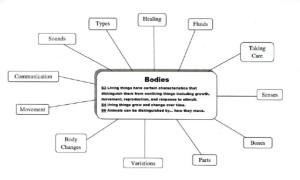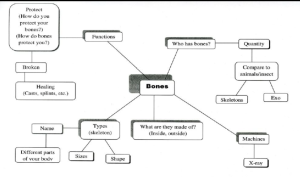ECPK 492 Specific Forms
11
As you complete your fieldwork, you will demonstrate your competencies by designing, implementing, and assessing a unit or project. You can select the link to get a a printable copy of this section of the handbook. The design phase includes 3 parts.
- Topic Selection
- Research
- Planning
Topic Selection
Choosing and setting up the topic for exploration is critical. Working with your BSU and site supervisor, you will determine a topic that is meaningful, unique, and will stretch children’s thinking. Select a topic in which children have some prior knowledge to build upon and don’t omit topics which children may not directly have experience. For example, the topic of Bones may seem challenging for preschoolers as bones are not visible. If the unit is designed properly, the children can develop skills and knowledge.
It is important for the topic to be real and meaningful to the children. If a topic is contrived or something that the children cannot personally connect with, they will not be fully engaged in the process. If the topic has greater significance, children will gain confidence and self-esteem as they engage with issues they know to be truly important.
Topics should be complex and have multiple possibilities for exploration. The amount of time you have to implement the unit is important. If the topic is too big for a 2-week time period, the children may feel pressured or frustrated. If it is too small, they will quickly lose interest.
Consider how the topic will promote problem solving, and experimentation in an active way. How will you encourage the children to:
- Observe: all children notice details about objects in the world around them. Adults can help by encouraging exploration and providing vocabulary. What objects and materials will you need to collect for hands-on observation?
- Predict: Adults facilitate by helping children gather information and articulate their question or predictions. Generate a list of questions.
- Hypothesis Test: Young children use simple what-if reasoning to test their hypotheses; preschoolers can pose more complicated questions and test them with assistance; older preschoolers can conduct experiments with supervision.
- Conclude and Synthesis: Children’s conclusions often lead to more sophisticated experiments. They enjoy comparing results and sharing their findings through speech, diagrams, and demonstrations.
After selecting the topic, begin your planning by brainstorming. A student, Lucy, was working in a classroom where plants would be the general topic for time period of her unit implementation. She wanted to select a topic that would complement and support learning about plants. She brainstormed ideas by creating a web (Eastern Connecticut State University, 2013)
As you can see from Lucy’s web, she generated several ideas that children could actively explore for a 3-week time period. She discussed “how animals affect plants” and “soil” with her BSU supervisor.

Here is another example from Eastern Connecticut State University, 2013 to illustrate going from a broad topic to zooming in on a more appropriate focus.

After creating the web above, go a step further and ZOOM in!
Zoomed in Web

It is helpful to identify Essential Questions to frame your unit (Bradley, 2016). The essential questions allow children to explore and experiment to answer questions. For example, if the topic is water guiding questions might include
- How do we use water? [relates to real world problems or questions]
- How much water do we use? [spark children’ curiosity and sense of wonder] [requires children to provide evidence or justification]
- How is water wasted? [engages children in real-life problem solving]
- How much water is wasted? [engages children in real-life problem solving
- How can water be conserved? [engages children in real-life problem solving
- Where does water come from? [intriguing and thought provoking][requires children to provide evidence or justification]
Examples of topics and a question
- Wheels: How do wheels make life or work easier?
- Our playground: How could we use loose parts on our playground?
- Social Change: How can I make, my class, my street, a better place?
- Clothing: Why do we wear clothes? What message does clothing communicate?
- Community: Does everyone belong to the same groups? What are my identities?
- Friends: How can I learn more about other people?
- Homes: What are the differences between how I live and how others live?
Research
To design your assessments and activities, do further research to learn about the topic. You will select objectives for the unit that reflect the information included on the zoomed in web (See Above). Objectives should relate to the early learning standards in several content areas such as science, social studies, or health. After you know what you want to teach, you will determine assessment methods.
- What will the children have to do, to demonstrate that they have achieved the learning goals?
- How will you evaluate the evidence?
- What are the age expectations?
- What are the correct or targeted responses from the children?
- How should they answer the questions?
.
Planning
Activities and key experiences are planned for each learning center, and all areas of the curriculum. Use the unit planning chart, web, and book list to assist in your planning. Consider:
- How will you share the assessment results to make learning visible to families, administrators, and the children?
- How will the children discuss the evidence they have found that helps them answer their questions?
- How will you allow the children to decide how to show what they did and what they found out to families and peers who were not there?
For example, the children could create displays to share the story of the project with others. Displays might include their drawings, notes, stories, taped conversations, photographs, models, graphs, and videotapes. Children can also act out what they have learned. Or the children might invite families and other guests to a presentation about their project.
